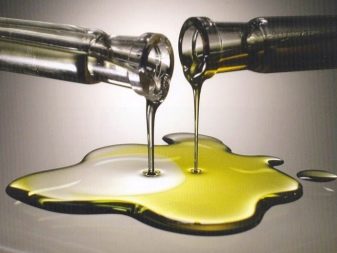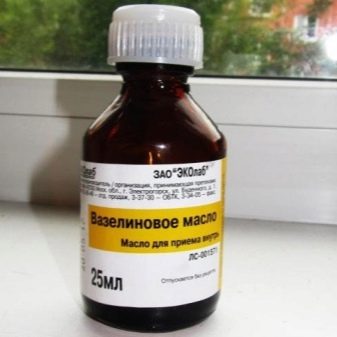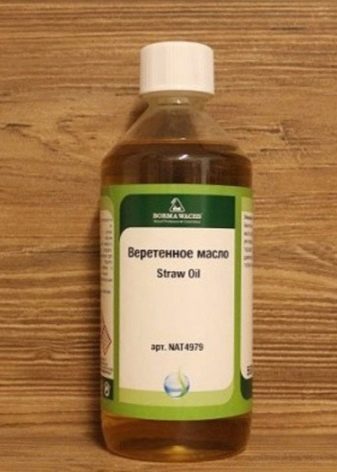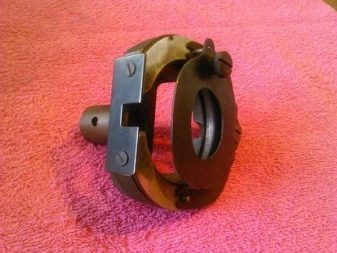Sewing machines are often used by housewives in everyday affairs, and some craftswomen can sew designer and unique things on them. Professional seamstresses and amateurs use different types of machines, but each of them needs care. Being at home or working in a sewing workshop, you need to use oil, which improves the operation of the equipment and extends its life. In order to choose the right lubricant and use it on your machine, you need to have certain concepts about the species diversity of oils for this technique and the places of its use.

Lubricant purpose
The sewing machine is an excellent helper in household chores, allowing you to sew, remodel or build what you need for the family. This device plays an even more important role on an industrial scale, where a large number of seamstresses are working at the enterprise, who daily manufacture sewing products. No matter what role the machine plays, what device and appearance it has, the main thing is respect for her and timely care.
With frequent sewing, using fabrics of different density and composition, dust, dirt, thread and residues of matter begin to get inside the equipment. If you clean the machine in time, then there will be no problems with its operation. To remove dirt, a special brush with a long and hard pile is used, which makes it possible to remove inaccessible garbage.

Just cleaning the sewing machine will not work to achieve perfect and long-lasting operation of the device; an even more important measure is the introduction of oil for the sewing equipment. Thanks to such additives, you can achieve:
- reduce the load on parts that constantly rub during operation;
- Improving the condition of parts that will wear less;
- additional protection of the inside of the equipment from dust and pollution;
- lack of rust on metal components.
If you timely lubricate the sewing equipment, processing only the necessary areas, then the most important components will be protected, ensuring reliable operation of all equipment for the longest possible time.

Structure
To know which oil will be the best choice for a particular sewing machine, you need to study its composition.
There are two types of oils for this technique: synthetic and mineral, for each specific equipment there are certain indications that are noted in the instructions.
Lubrication can be drip or dry, depending on the type of machine. At large enterprises, automated lubrication is used for sewing equipment, where the oil is supplied by a computer built into the equipment. Ordinary cars are deprived of such a mechanism, because the hostess must manually select the oil and add it to the appropriate points on the equipment.


Each variety of oils has its own structure, composition and method of exposure, therefore, the selection of raw materials should be taken seriously. Among synthetic oils, silicone variety is especially popular, which is best used for working with threads, blades, knives, parts and units of a machine, as well as elements made of rubber and plastic.
Choosing the most suitable mineral oil, you should stop at petroleum jellyIt is equally suitable for home and industrial use. With it, you can lubricate knives, blades, rubber and plastic elements, parts of knitting machines, in addition, it can help open the zipper on clothes if it is jammed.


Each of the above options is a specialized composition for working with sewing machines, and its cost is quite high, because many housewives recommend using alternative means, processing the machine gun oil. If there is a car in the house, many are advised to pay attention to engine oil. To understand what needs to be added to the equipment, and what it is worth giving up, you need to clearly understand the composition and purpose of each oil option.


Mineral
Mineral engine oil is produced through an oil refining process, which ultimately produces a mixture of high boiling carbons. To maintain sewing equipment in good working condition, it is recommended to use petroleum jelly variety.

This odorless and tasteless, watery-white oil is used when the machine needs a clean lubrication of the components. Among the advantages of this variety can be distinguished:
- composition without smell and taste;
- has no color;
- safe for health;
- has an antistatic effect;
- after use does not give greasy spots;
- no solvents in the composition;
- helps protect the mechanism from corrosion;
- contributes to better sliding of parts;
- prevents sticking.
Vaseline oil is used for sewing machines and overlocks, because it leaves no residue on matter, and in case of any contamination it is easily washed off. Mineral oils have a moderate cost, therefore they are used more often than analogues.

Synthetic
Synthetic oils are produced through the synthesis of chemical elements, which leads to the exclusion of minerals with solvents from the composition. This option has its advantages, which include:
- the ability to work in conditions of temperature from -40 to +200 degrees;
- good composition flow rates;
- ability to penetrate into the deepest parts of mechanisms;
- lack of solvent and mineral components;
- the ability to use oil when working with parts from different materials, such as metal, plastic, rubber;
- when hit on a cloth or other surface, is removed thanks to any solvent;
- helps to avoid twisting and sticking of threads, as well as reduce the number of revolutions of the machine;
- makes it possible to effectively protect equipment from corrosion and oxidation processes.

Silicone oils are very popular and have good characteristics, but their cost significantly exceeds the mineral counterpart, so the choice is often made on the basis of the financial component.


Semi-synthetic
Semi-synthetic oils are a cross between the previous two options. In their composition they have components of both petroleum and synthetic oils. The amount of each component may be different depending on the purpose.
You can use this option if there is no pure variety of this or that oil or due to the small amount of mineral and synthetic composition, which alone will not be enough to process the internal parts of sewing equipment.
The main factor in choosing a variety of composition will be its quality and the impact that it will have on all the details of the machine.


Manufacturers
To buy high-quality oil for sewing machines, you should be guided not only in the composition, but also in the manufacturers that produce it. It is worth highlighting the most popular and established brands.
- Mobil - used for garment products, protecting it from corrosion, does not oxidize due to oxidation inhibitors. It is possible to get in capacities of 1, 5 and 10 liters.



- SR-32 oil - petroleum jelly variety used to ensure good performance of industrial sewing machines. Available in containers of 1 and 5 liters.


- "Cinderella" - The domestic brand of oil for sewing and knitting machines, has an improved anti-oxidation formula, which allows to increase the operational parameters of the equipment. Available in 100 ml containers.

In addition, on sale you can find oils IGP-18 and I-20A, manufactured for industrial sewing and knitting machines. These products are produced in containers of 5 liters. The cost of each specific product may be different, which is dictated by the country of manufacture, the composition of the oil, as well as the volume of the container.


What can be replaced
If it is not possible to purchase a specialized lubricant for sewing equipment, and the need for its use is high, then you can try to use what is at hand, replacing the necessary composition with an analog. Among the most suitable options are worth noting:
- replacement of a specialized product with automobile oil;
- application of spindle composition;
- M6 engine oil can be used, but not too often due to higher densities;
- a short-term solution may be the use of vegetable oil, but before this option it is better not to allow, otherwise the parts inside the machine may stick together and stick.


There are enough options for replacing specialized compounds, but each of them provides only partial assistance, not being able to process the mechanisms of the sewing machine as a synthetic or mineral compound does, and often the equipment is only harmed. Those who are engaged in sewing seriously should not save on care products, otherwise a sudden repair of equipment can not be avoided.

Oil selection
To choose the best quality oil for a sewing machine, it is necessary to study the available formulations by the following criteria:
- maximum range of equipment cleaning;
- viscosity indicators of the composition;
- maximum and minimum temperatures at which the full effect of oil on the sewing machine can be carried out;
- chemical stability of the composition;
- good performance leaching dirt;
- the presence of additives.
The cleaner and more transparent the oil, the cleaner the fabric will be after the sewing process, and the internal parts will not stick together even with a long idle time.


The viscosity index is important in order to understand how strong the film will be, which is formed from the introduction of oil into the mechanism. Its optimal indicator should be values in the range of 18-20 mm2 / s. Due to chemical stability, oil for sewing machines does not oxidize and does not lose its basic properties, interacting with metal elements, raw materials and other factors that can affect it from the outside.
Good detergent qualities provide maximum cleaning from contamination of those areas that are subjected to the greatest friction. Thanks to additives, the quality of the oil can be significantly improved, which will affect the sewing process and the performance of the sewing machine.


To pick up oil for a particular machine, It is worth studying the instructions for it. The accompanying documents contain important information about what is best used for this equipment, and whether there is a need to lubricate the device. Modern cars have a different structure and materials, so it is not always appropriate to use oil for them. To extend the life of the equipment and its soft and high-quality operation, it is important to remove contaminants, which become the main cause of malfunctions.
With timely cleaning of the machine and the use of lubricating compounds, it is possible to achieve reliable operation of any sewing equipment, regardless of its age and useful life.

About the choice of oil for lubricating sewing machines is described in the video below.










